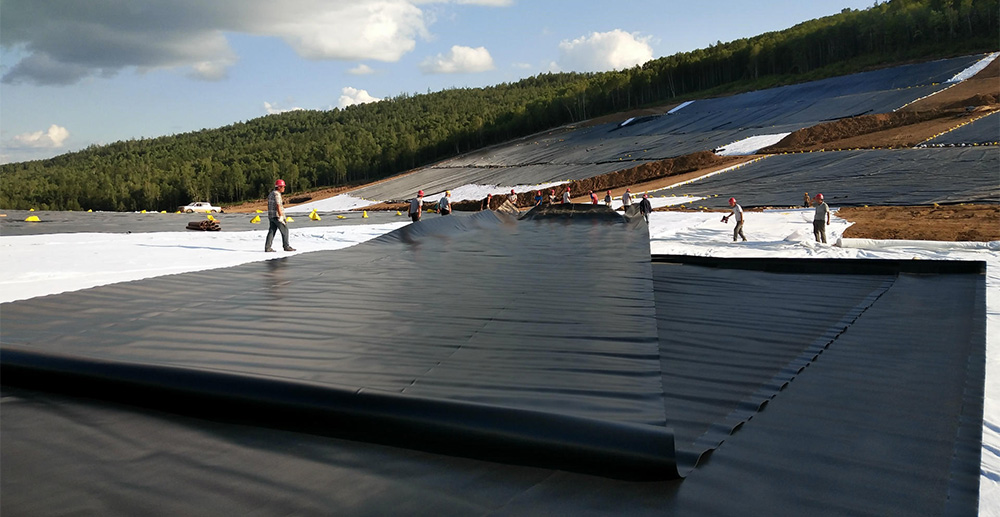Geomembrane laying operation, when encountering wind environment, so how to lay in the wind environment to achieve good results, how to blow the wind environment flat laying? Here are some ways to do this.
Storage and handling work before laying geomembrane, geomembrane rolls should be avoided and checked for damage before installation, geomembrane should be stacked in a flat and water-free place with pile height not exceeding the height of four rolls and the identification mark of the rolls can be seen; the floor tiles must be covered with opaque material to prevent UV aging.
Keep labels and data intact during storage; geomembranes must be protected from damage during transportation and physically damaged geomembranes must be repaired. Heavily abraded geotextiles must not be used. Any geomembrane that has come in contact with leaking chemicals is not allowed to be used.
The method of laying geomembrane in wind environment uses manual anshun windward rolling; when laying, it should be pressed with soil-containing woven bags, the surface of the cloth is flat and the deformation amplitude is suitable; the installation of long or short fiber geotextile usually uses several methods of lap, stitching and welding. The width of seam welding is generally above 10~15cm, and the width of lap joint is generally above 20cm. Geotextiles that may be exposed for long periods of time should be welded or stitched.
All stitching must be done continuously in high winds. The stitching must be secure. The topography must be overlapped by 150mm before overlapping. seam distance from the edge of the fabric (exposed edge of the material) is at least 25mm and the geomembrane seam allowance consists of a line and a line chain seam. The thread used for the seam should be a resin material with a tension greater than 60N and have the same or greater chemical and UV radiation resistance than the geotextile. Any “missed stitches” in the sewn geogrid must be resewn in the affected area.
Post time: Feb-01-2023

